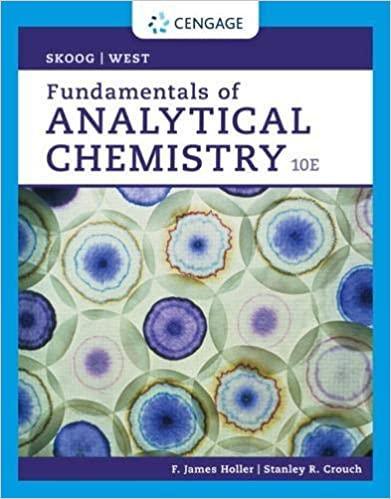Answered step by step
Verified Expert Solution
Question
1 Approved Answer
FILL IN THE BLANKS 5 Today's Source Rate of Methane We can now repeat this steady state calculation for today's mixing ratio of methane, 1860
FILL IN THE BLANKS 
5 Today's Source Rate of Methane We can now repeat this steady state calculation for today's mixing ratio of methane, 1860 ppb. Again, we first have to convert the mixing ratio of methane to a concentration: 9(2000) molecules m Calculate the source rate in molecules per year: S(2000) = 9(2000) XV molecules yr! And convert this number to Tg(CH)/yr: S(2000) = S(2000) * (CH4) g/yr Tg/yr AOS 2L Lab Assignment 1 Winter 2021 5 This result shows that the source rate of methane has increased by _Tg/yr over the past 300 years due to human activities. If you compare this to the total anthropogenic source rate that is listed in Table 2, you will notice that the number you calculated is much lower. Why is that? The reason for the discrepancy between your calculation and the values in Table 2 is hidden in the assumption that we made to do this calculation: The Steady State of Methane. While in 1700, the concentration of methane did not change with time (or at least only changed little), there is a change from _ ppb in 1980 to - ppb in 2000 (estimate these mixing ratios from Figure 1, or use the interactive chart in methanelevels.org). The methane concentration is therefore not in a steady-state! We can also look at this from the condition that in a steady-state, the source rate and the sink rates have to be equal. Compare the total source rate in 2000 (add the total natural and anthropogenic source rate in Table 1 and 2) is Tg(CH4)yr, while the total loss rate is: Tg(CH.Vyr. There is therefore an imbalance (the difference between the two) of Tg(CH)/yr Because of this imbalance, it is not correct to apply the steady-state box model. 5 Today's Source Rate of Methane We can now repeat this steady state calculation for today's mixing ratio of methane, 1860 ppb. Again, we first have to convert the mixing ratio of methane to a concentration: 9(2000) molecules m Calculate the source rate in molecules per year: S(2000) = 9(2000) XV molecules yr! And convert this number to Tg(CH)/yr: S(2000) = S(2000) * (CH4) g/yr Tg/yr AOS 2L Lab Assignment 1 Winter 2021 5 This result shows that the source rate of methane has increased by _Tg/yr over the past 300 years due to human activities. If you compare this to the total anthropogenic source rate that is listed in Table 2, you will notice that the number you calculated is much lower. Why is that? The reason for the discrepancy between your calculation and the values in Table 2 is hidden in the assumption that we made to do this calculation: The Steady State of Methane. While in 1700, the concentration of methane did not change with time (or at least only changed little), there is a change from _ ppb in 1980 to - ppb in 2000 (estimate these mixing ratios from Figure 1, or use the interactive chart in methanelevels.org). The methane concentration is therefore not in a steady-state! We can also look at this from the condition that in a steady-state, the source rate and the sink rates have to be equal. Compare the total source rate in 2000 (add the total natural and anthropogenic source rate in Table 1 and 2) is Tg(CH4)yr, while the total loss rate is: Tg(CH.Vyr. There is therefore an imbalance (the difference between the two) of Tg(CH)/yr Because of this imbalance, it is not correct to apply the steady-state box model 
Step by Step Solution
There are 3 Steps involved in it
Step: 1

Get Instant Access to Expert-Tailored Solutions
See step-by-step solutions with expert insights and AI powered tools for academic success
Step: 2

Step: 3

Ace Your Homework with AI
Get the answers you need in no time with our AI-driven, step-by-step assistance
Get Started


